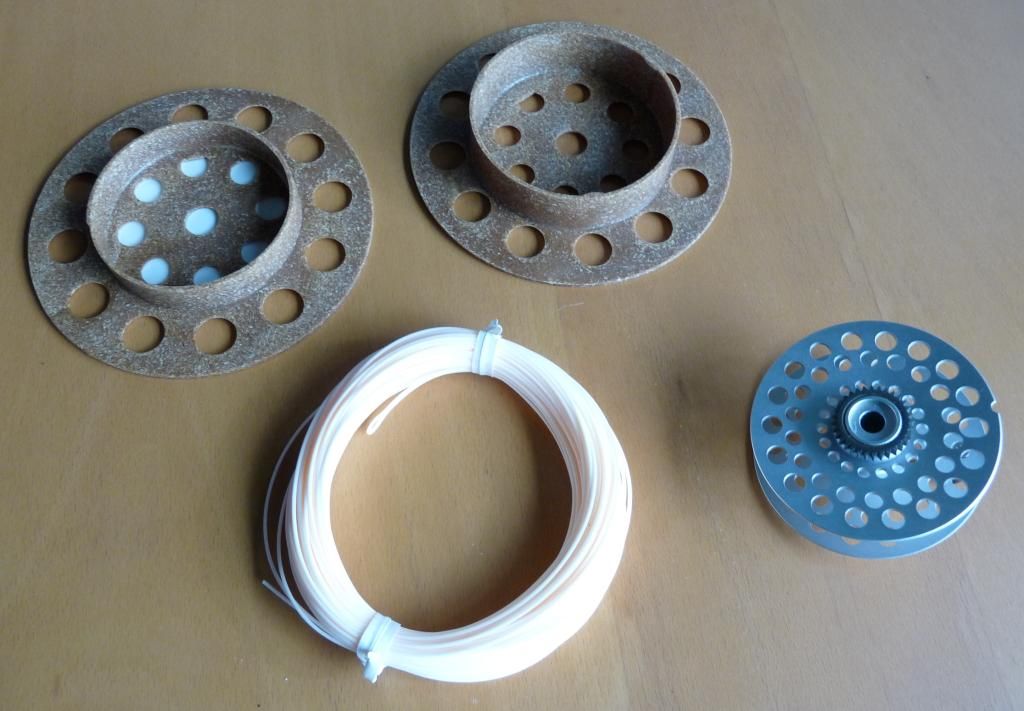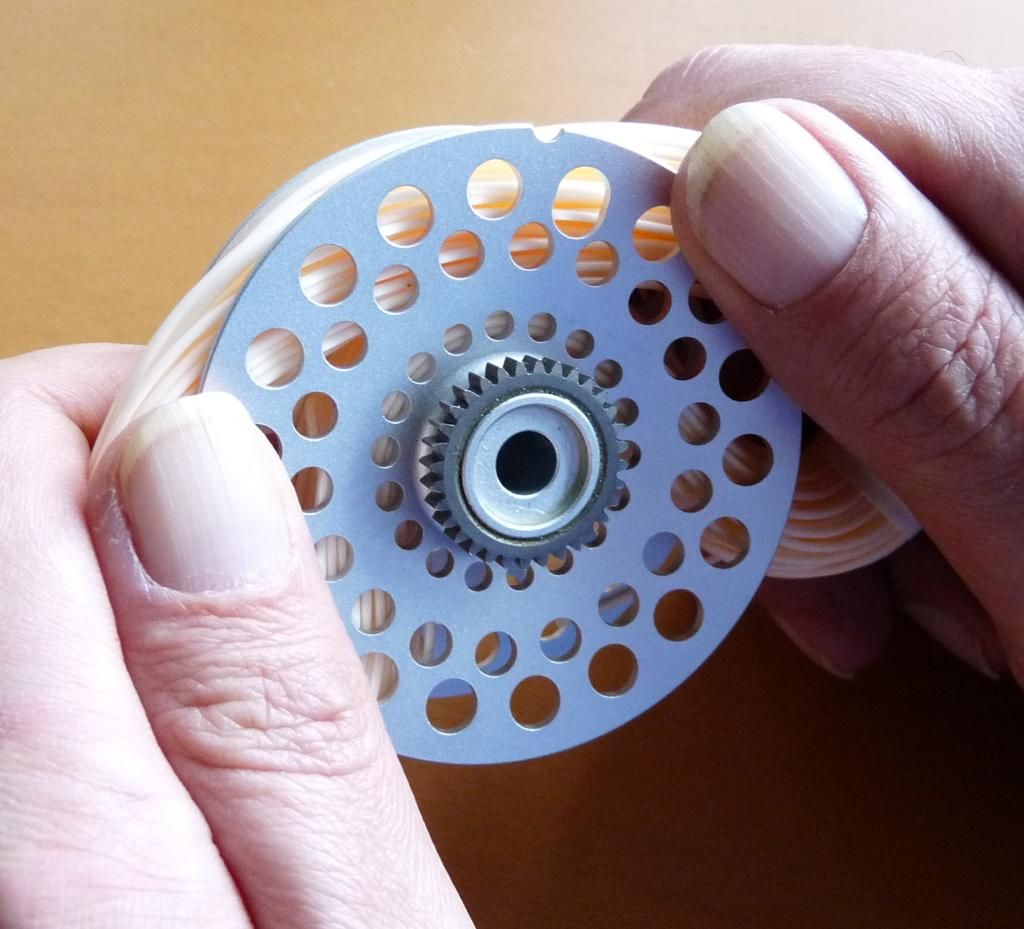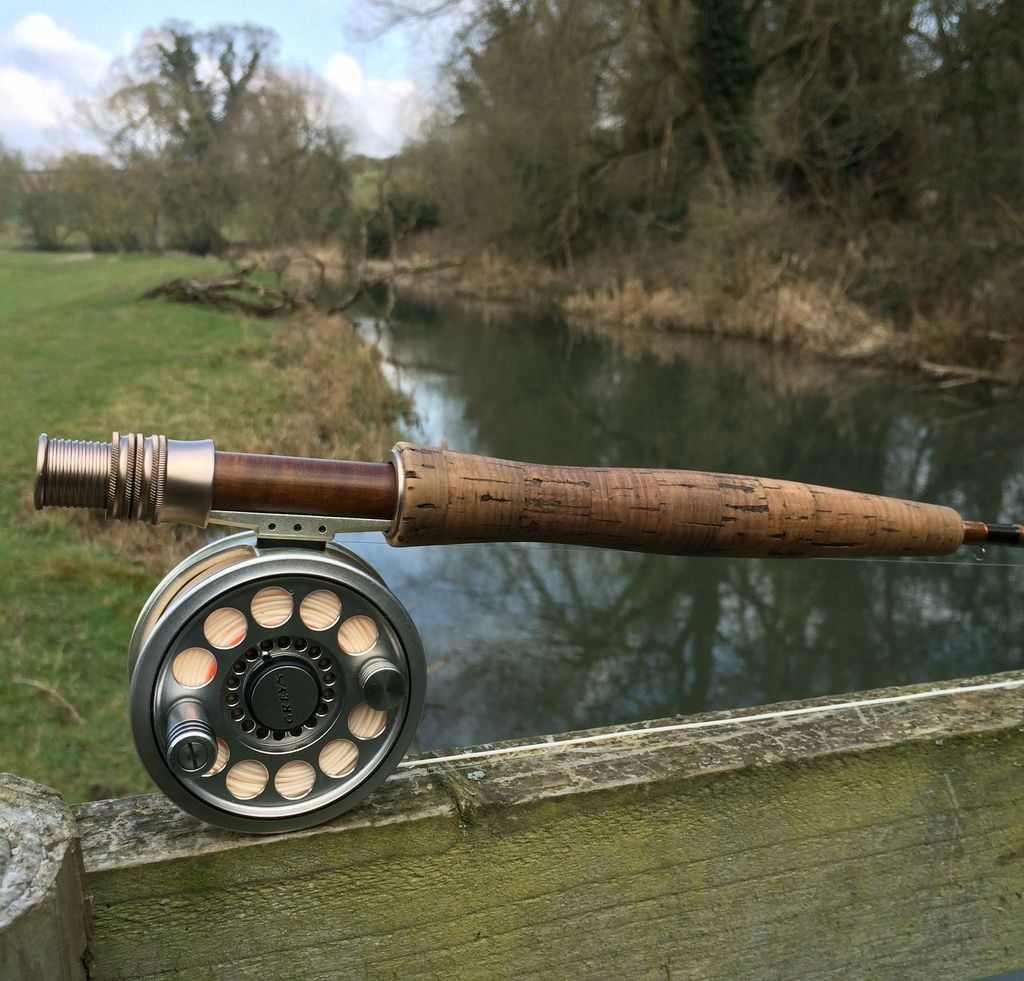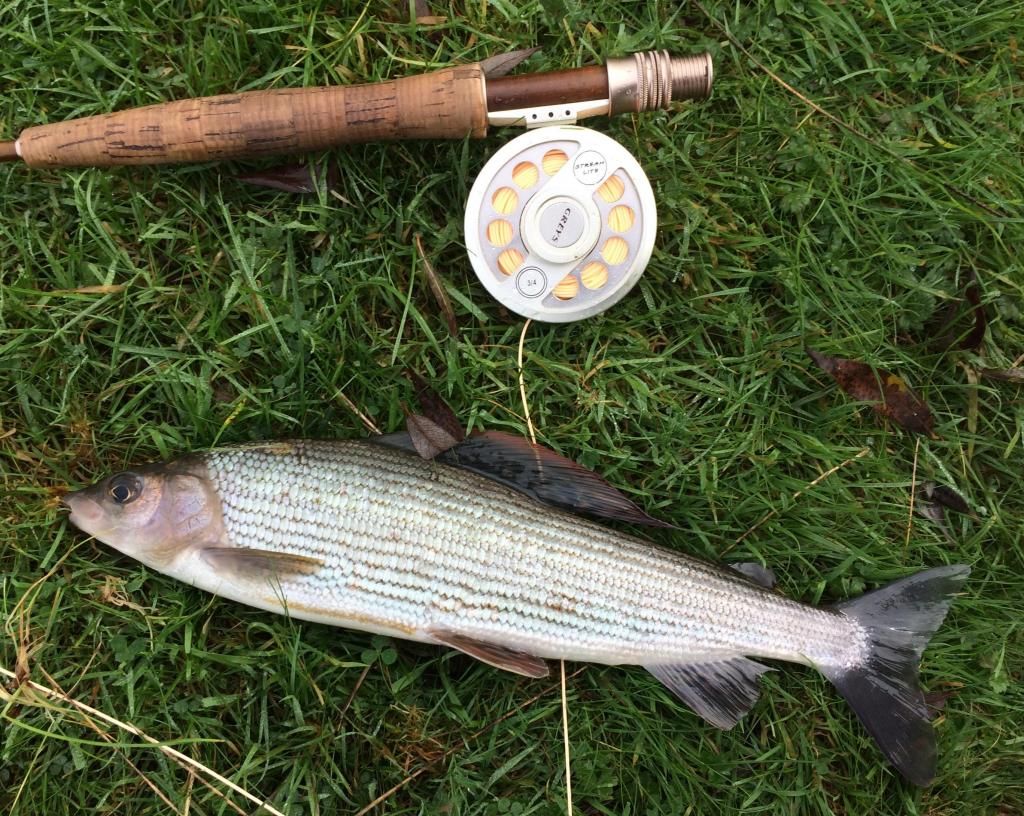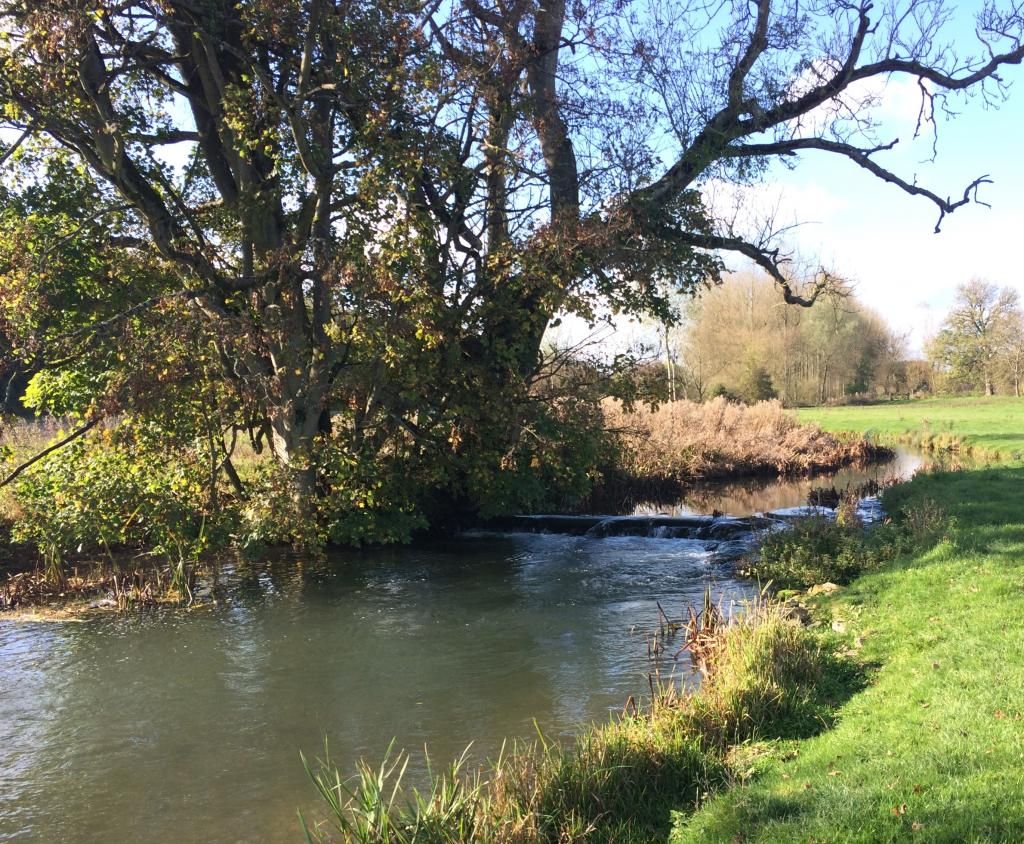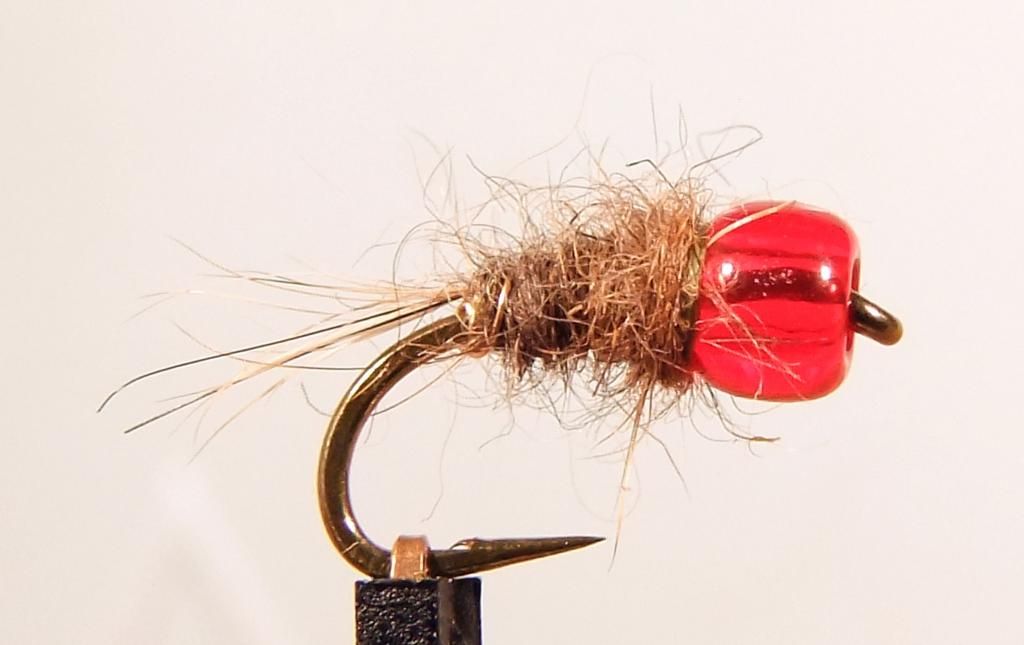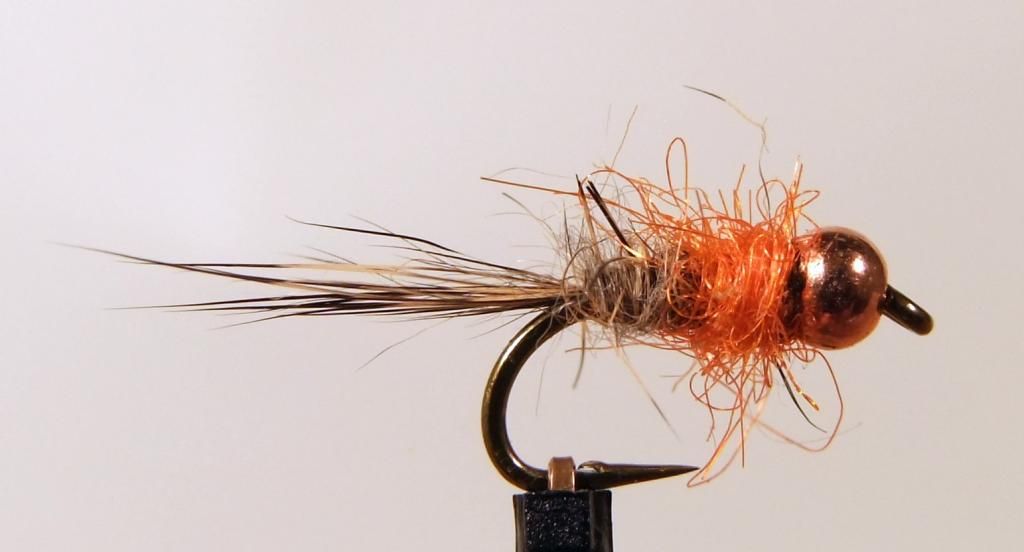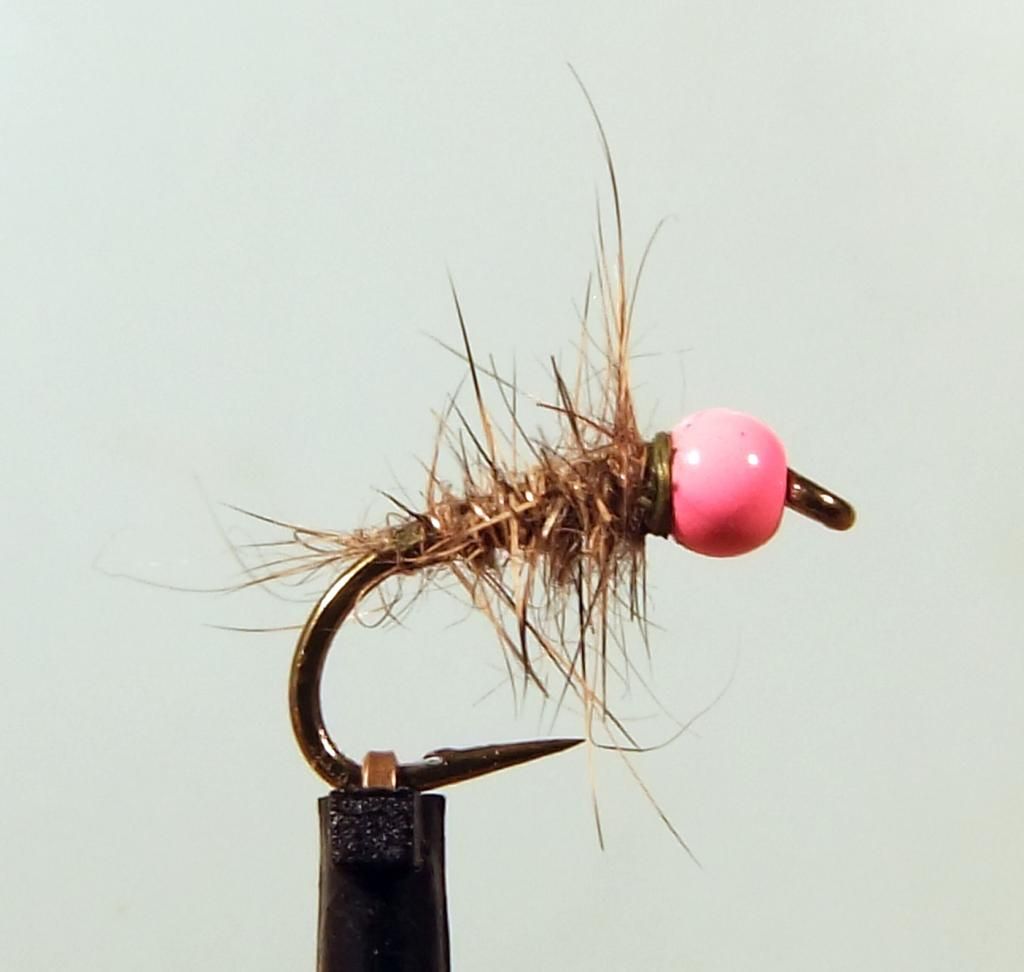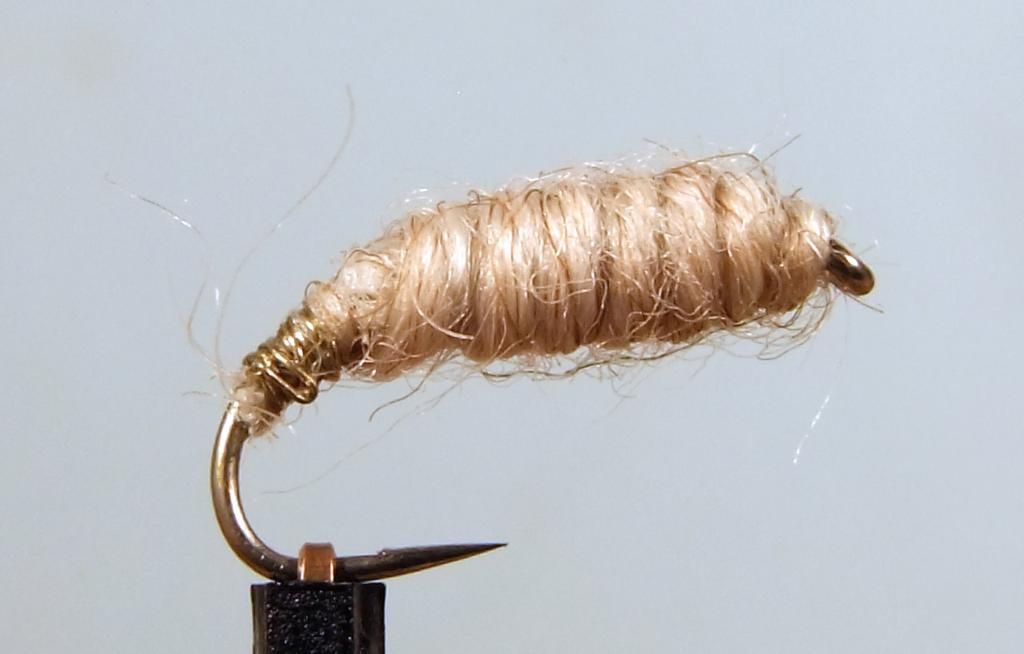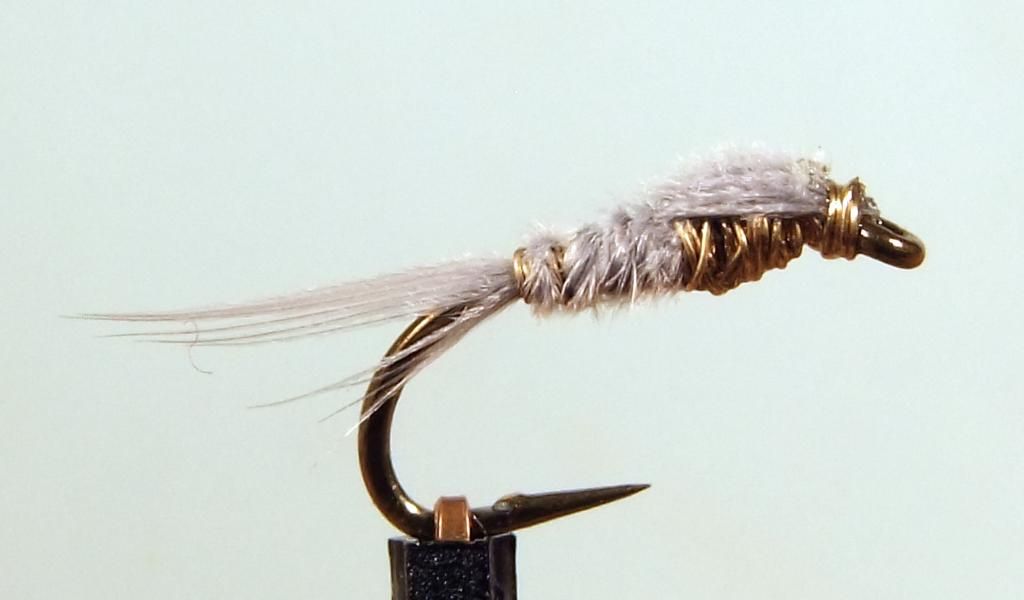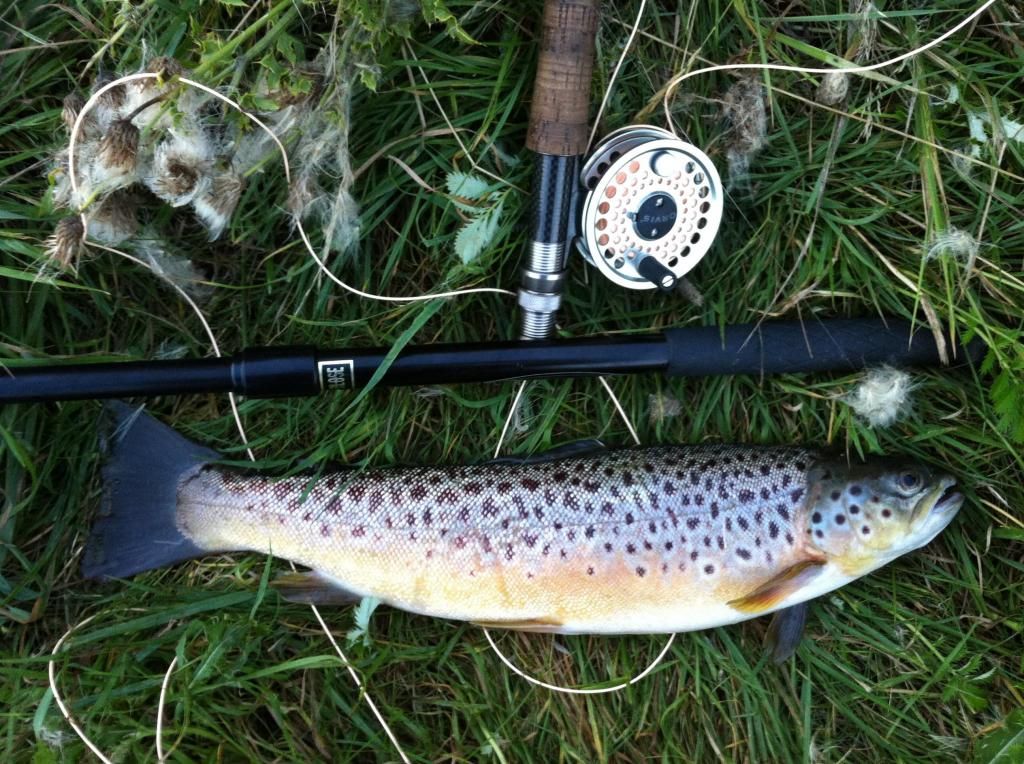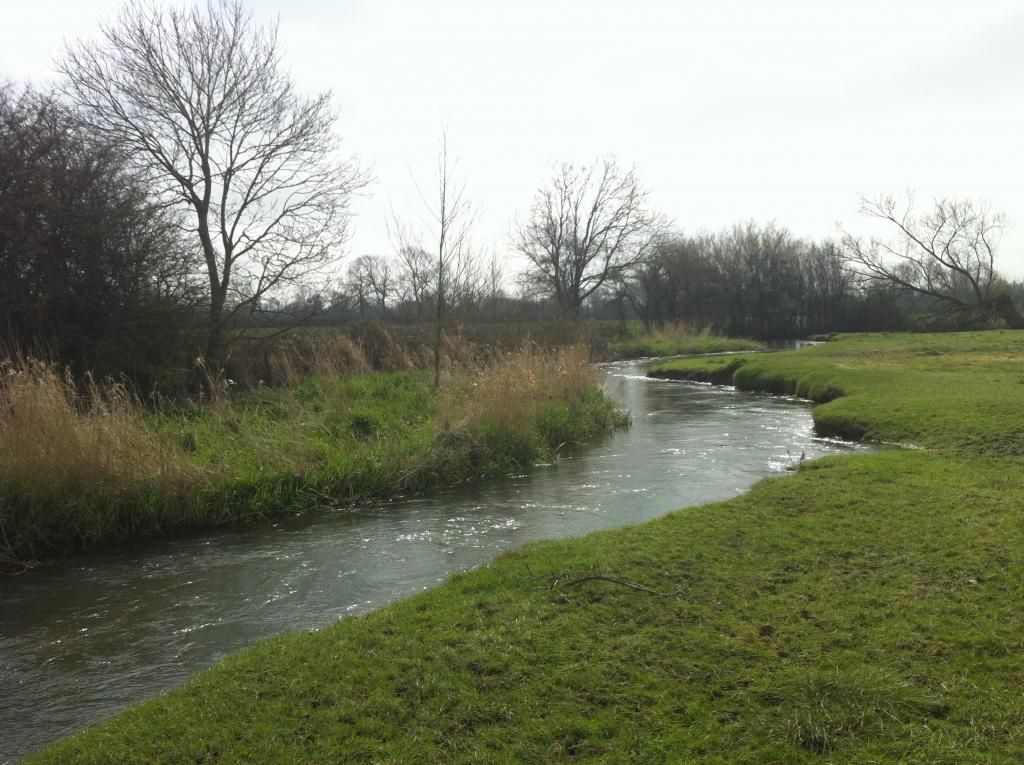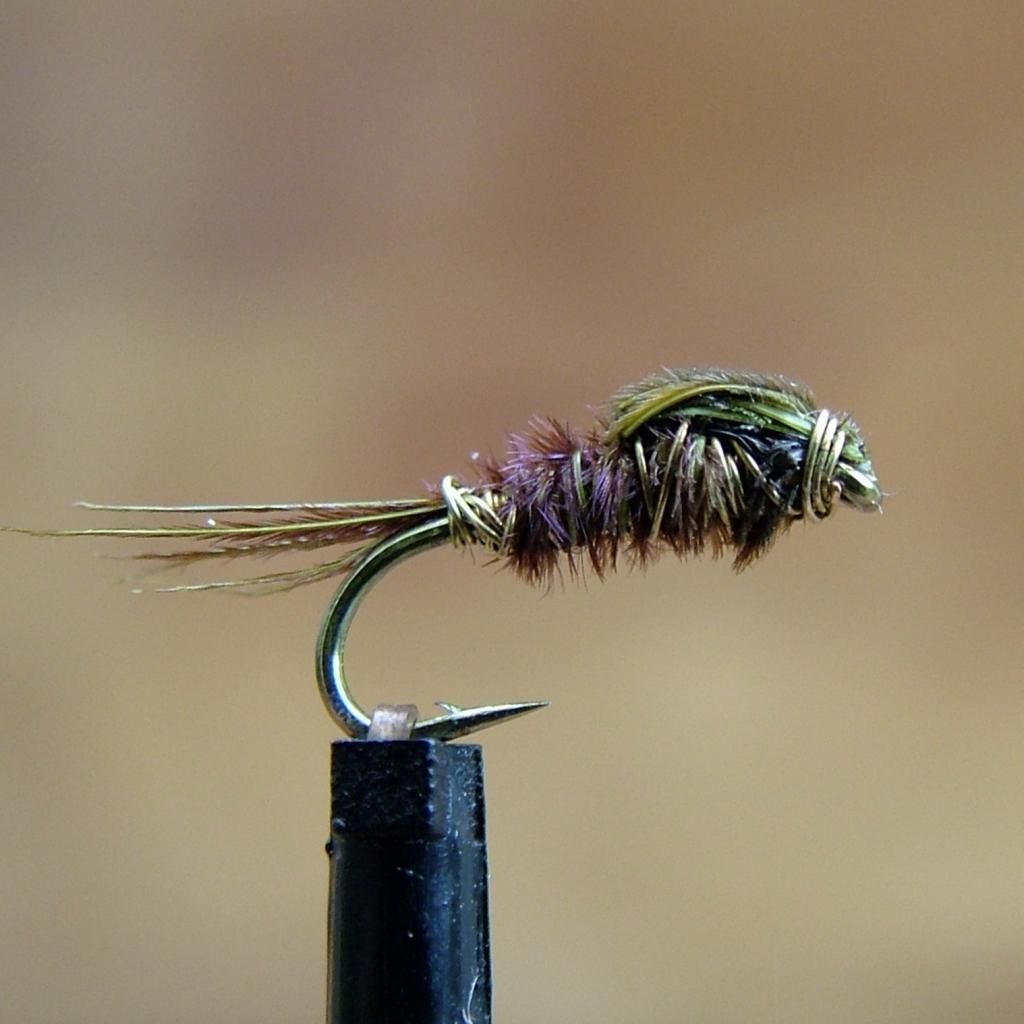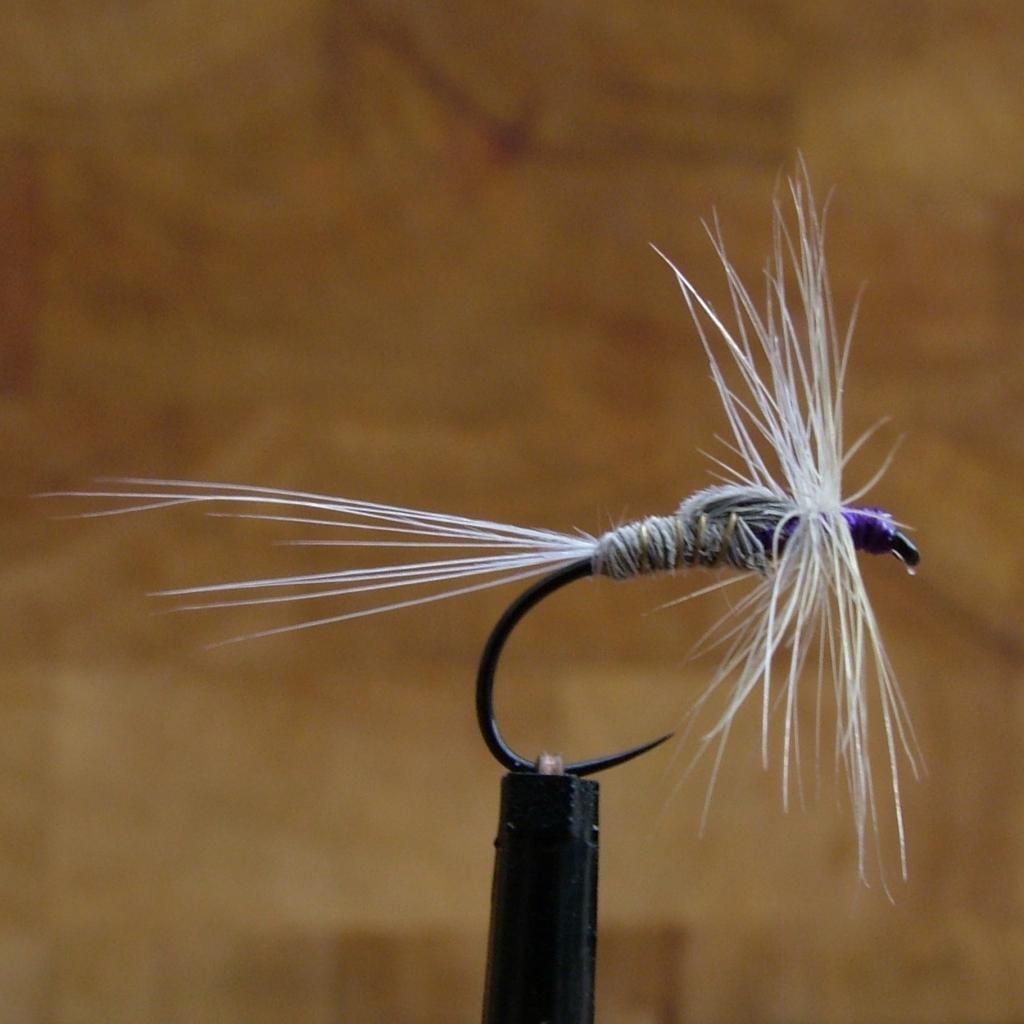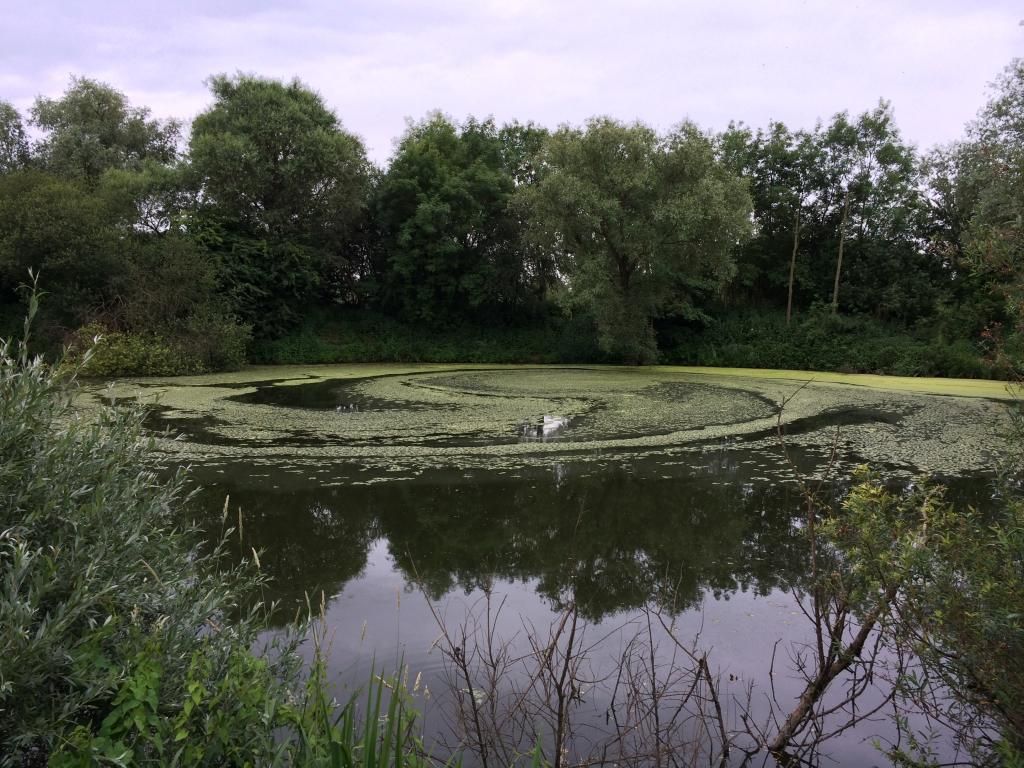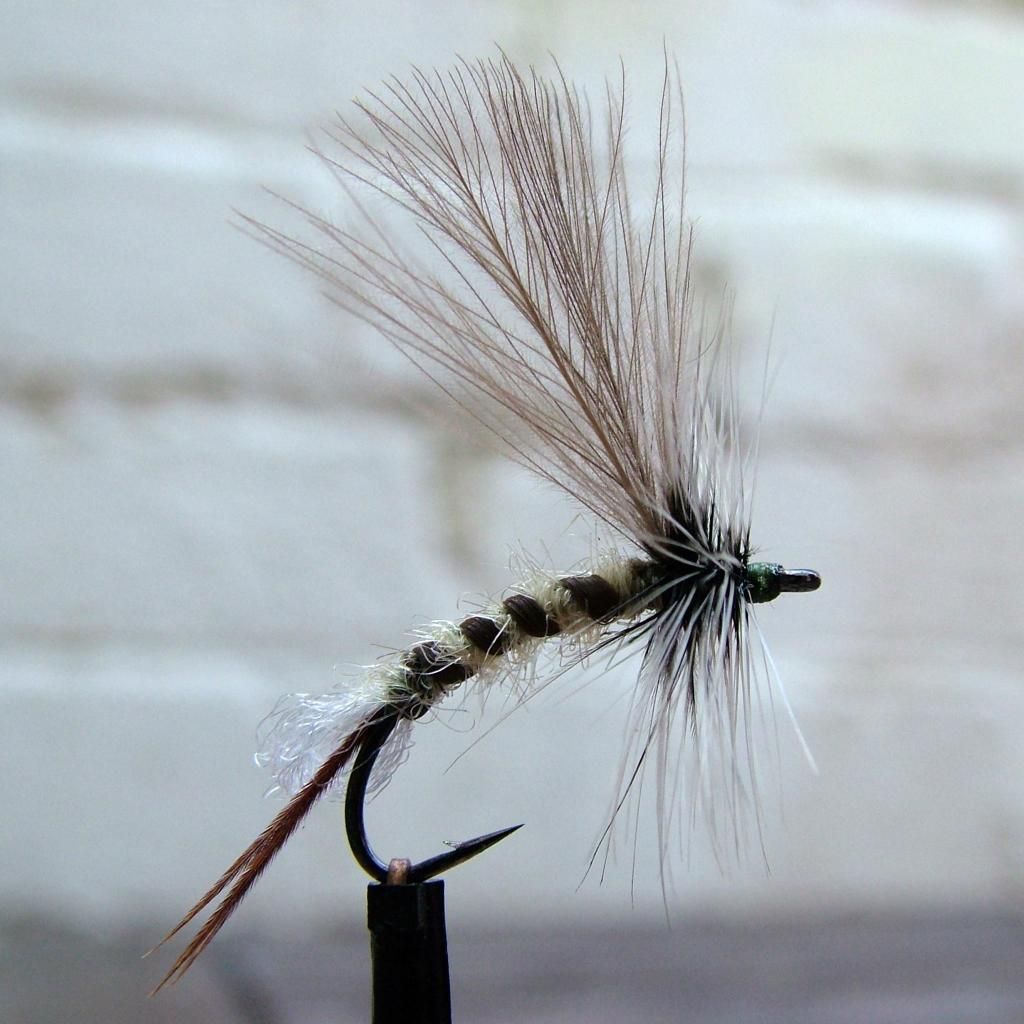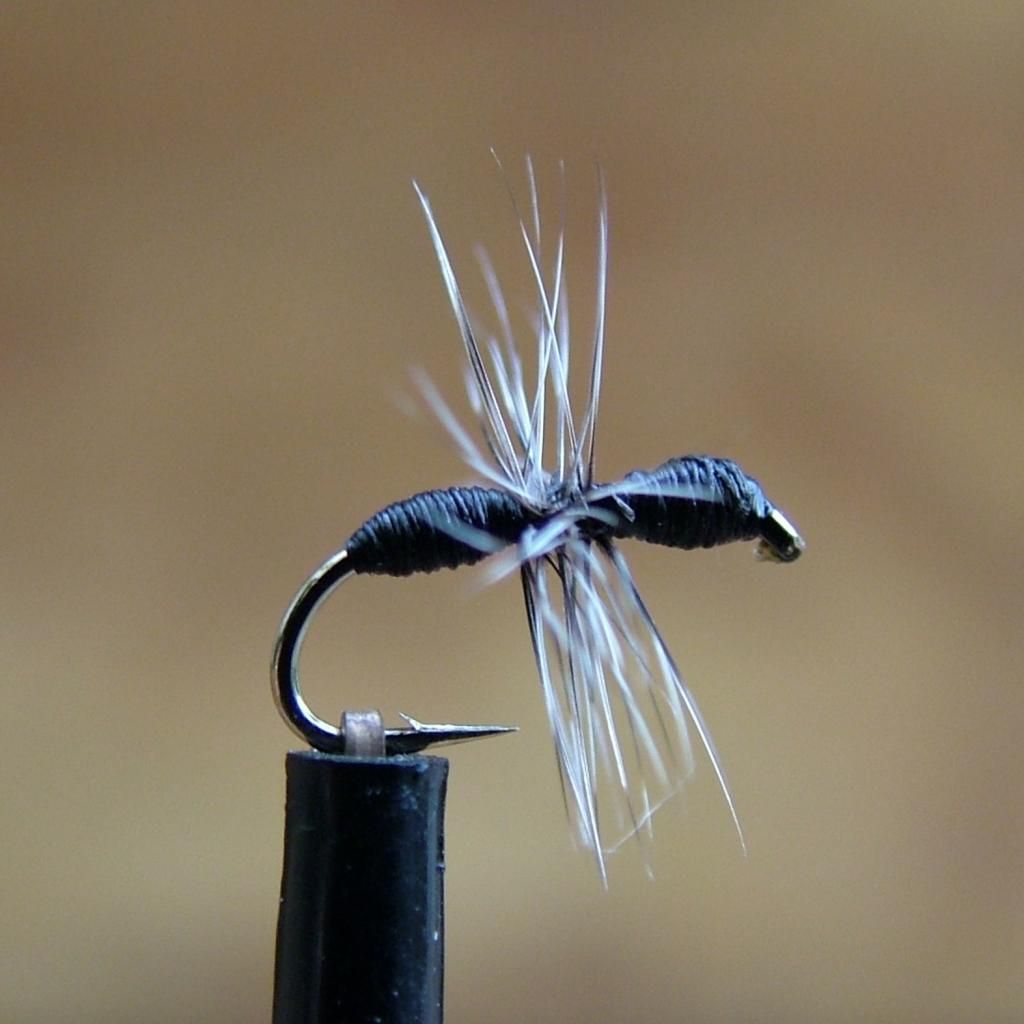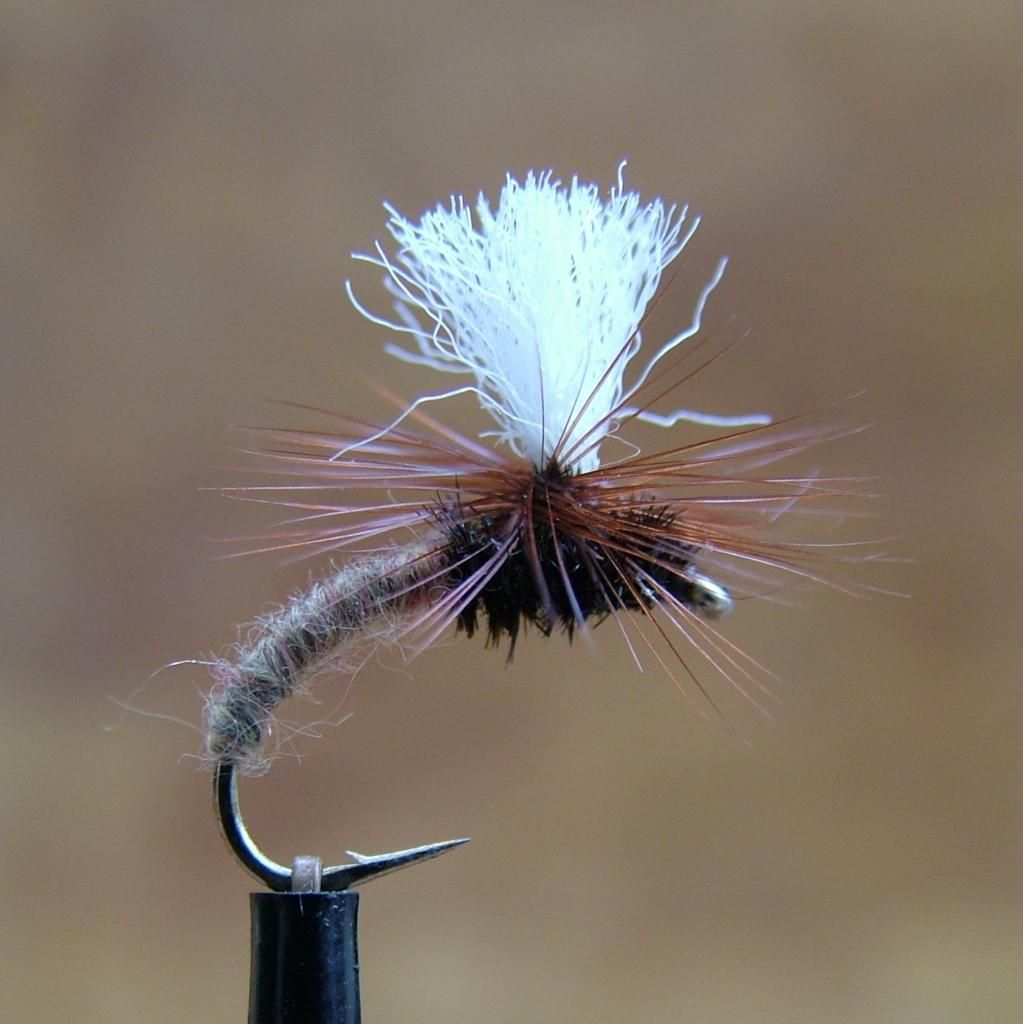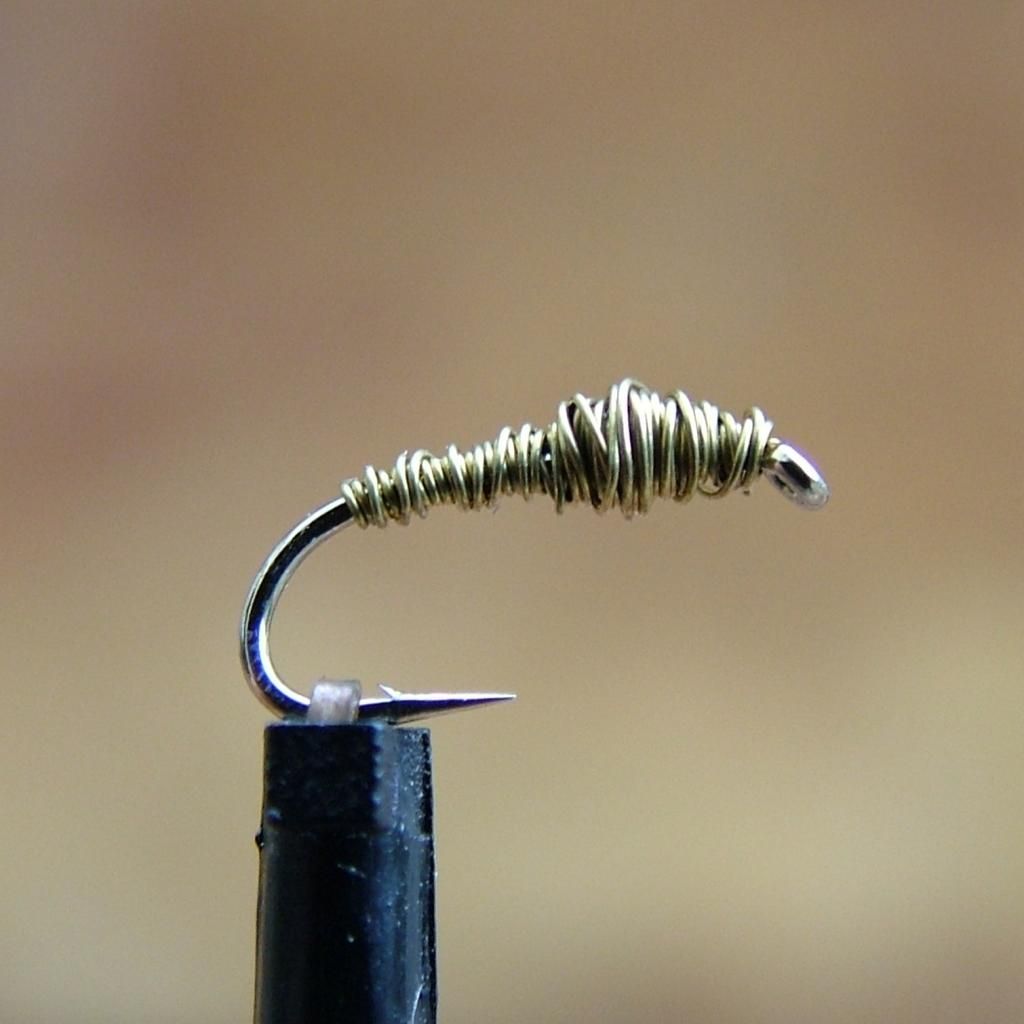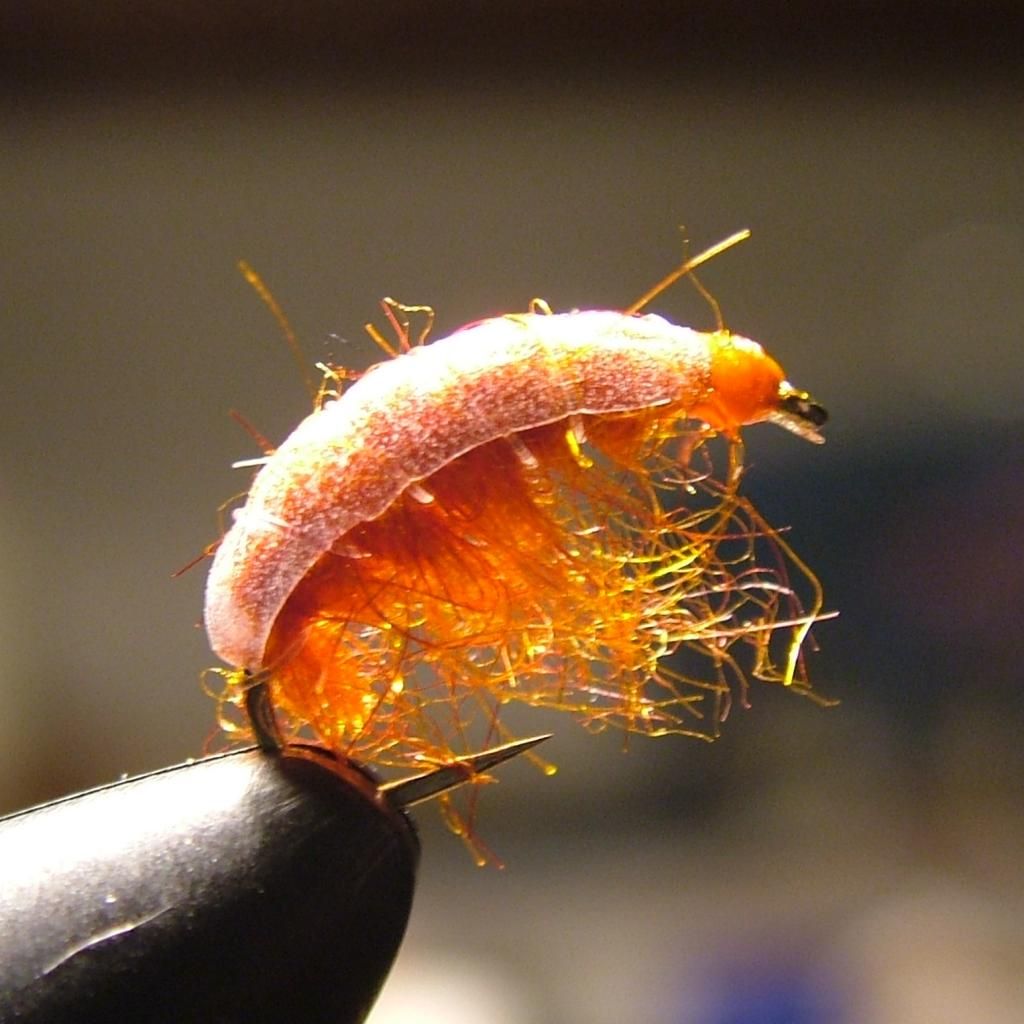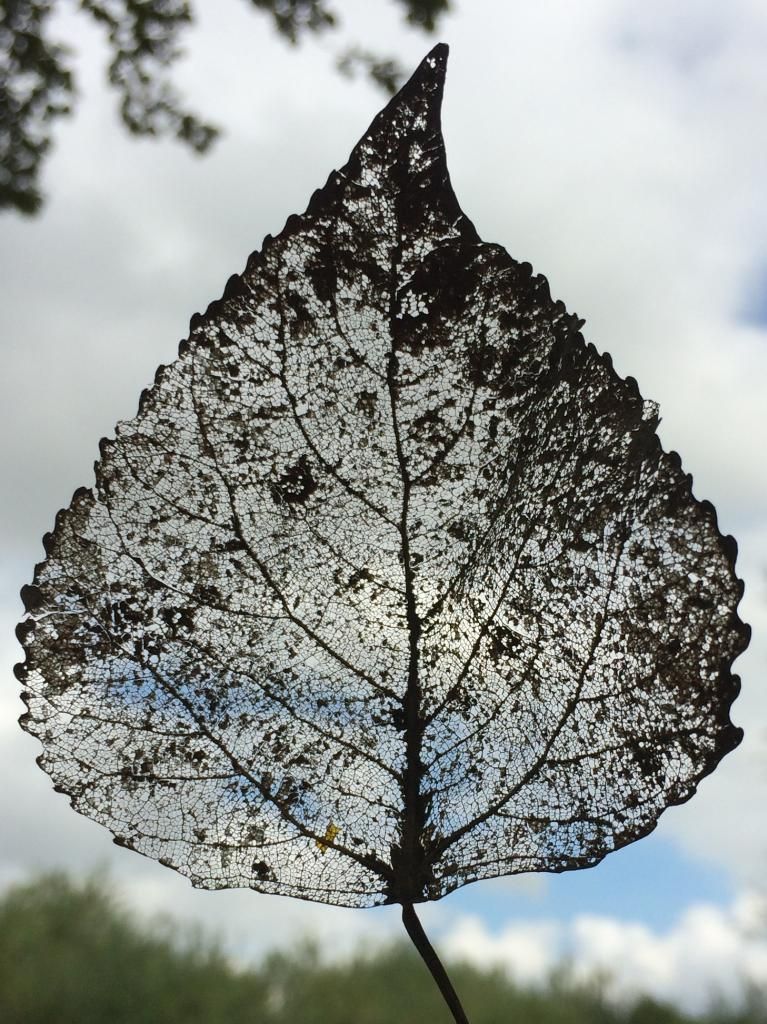Regular readers of this blog may have noticed that the regular poster of this blog has not been so regular of late. Well, I've been fishing: mainly fly fishing and always catching and releasing. This poses a problem as there are, consequently, few pictures of fish to post. Trout are sensitive creatures and there little time, in between catching fish and releasing them, for photos; especially if one is a lone fisherman.
The fish below is one of four I killed last season, taken after I had taken off the fly, wound in, and was wending my contented way homeward at dusk last September. It rose noisily in a pool I was passing. I tied on a grey duster and it took it first chuck. It was the last fish of the season.
A nice near two pounder from last season
This year, I decided to take no fish at all unless I felt it necessary, because of deep hooking, exhaustion and so on. So far I haven't had to dispatch any. This is a personal choice and is not in anyway meant as a polemic. This post is about the season now drawing to a close and mainly concerns flies I've found successful. The recipes for all the flies are given at the end.
I decided to fish opening day on the Churn at Siddington. The weather was cold and the river high. It did not look promising. I took a long swig from the hip flask and offered up a prayer to the river gods.
The Churn on opening day
Naturally, I had arrived far too early and there was nothing rising, so I tied on a pheasant tail nymph and chucked it upstream with the cack-handedness of one who has not cast for six months. Amazingly, after only two or three casts, the leader jagged upstream and I was into a fish. Although it bumped itself off almost immediately, it had served to instil a modicum of hope. I moved up the beat casting hither and yon into likely spots, my casting becoming gradually more relaxed and rhythmical. No further takes, however, were forthcoming.
Pheasant Tail Nymph
A tad of despondency was beginning to enter into proceedings, and I had begun to imagine that I'd missed the only chance of the day. But at midday a prolific hatch of large dark olives began abruptly, and fish began to rise to them. Swapping the ineffective PTN for a size 14 Kite's Imperial I was soon among the fish and eventually took six. All nice fish, for this little stream anyway, the largest being about a pound.
Kite's Imperial
The body of the imperial, as you know, is formed from herl from a heron's primary feather. The selling of heron feathers, however, is rightly prohibited. They are not hard to find, though, if you keep your eyes open. When I see a heron at station on the bank side, I always have a butcher's after they've flown off. It's surprising how often usable feathers can be found. Substitute material can be used for imperials, grey goose or turkey for example, but heron is the original and best. On contact with water heron herl assumes a peculiar translucency, allowing the purple thread to show through, darkening the body in a particular and consistent way. Oliver Kite advised using a darker, more gingery, dun hackle and tail for early season imperials, with a lighter, paler hue more effective later in the year. I have a few dun capes and keep flies of various shades in the box. The example pictured above is a late season variant. Some people don't bother with the doubled thorax, suggesting that it is not visible to trout. I find it adds a certain something aesthetically and its inclusion cannot hurt.
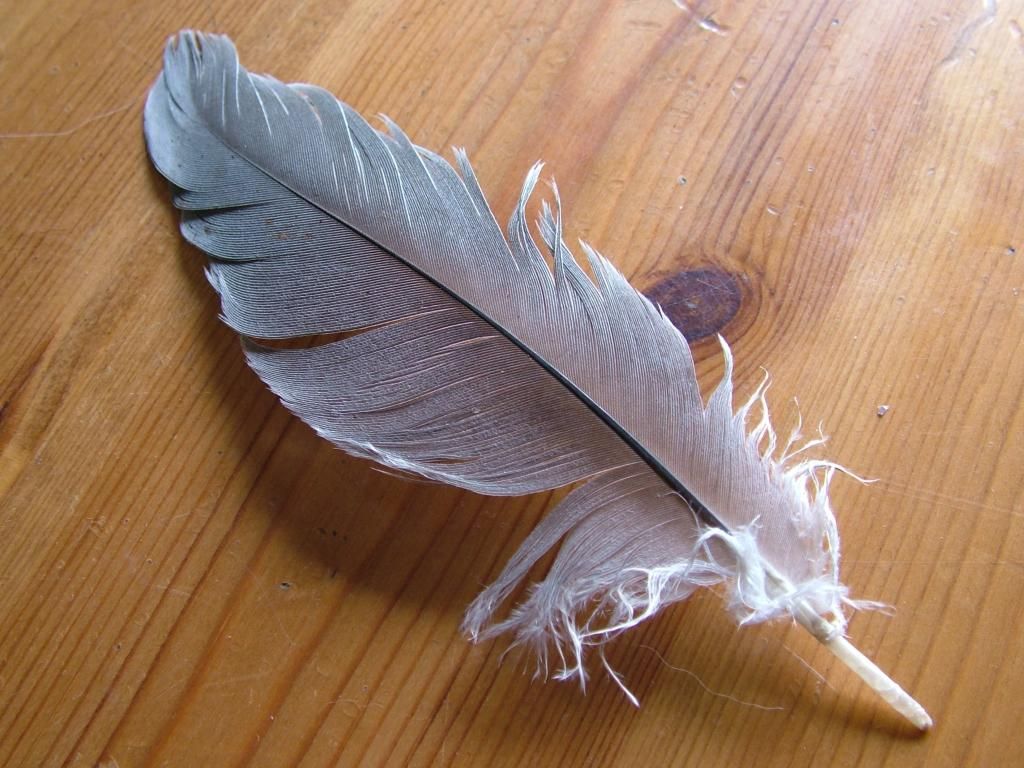
A collected heron feather
Kite, of course, professed to use few other dry flies than the imperial. I can believe it. It is, in my opinion, as good a general purpose dry as any for the olives in their various forms, and has, this season, temporarily surpassed the tailed grey duster as my first choice dry when I'm not sure what's rising, in sizes 14, 16 and 18. Also this season, I have discovered the Tiemco 103bl, upon which the pictured imperial is dressed. It is a very light barbless, wide-ish gape pattern that comes in in-between sizes - 13, 15, 17, etc. - and which I cannot recommend too highly. An ideal hook for high riding dun patterns
Hawthorn
The hawthorn season, as any fule kno, can be as exciting as the mayfly. there are many hawthorn patterns and the one pictured I have found to be as killing as any. Circumstances dictated that I had only one session in their company this year, but I enjoyed it immensely. When B. marci are falling, it can be tricky to tempt fish with any other fly - and who, indeed, would wish to try?
In late May Mrs Retiarius and I travelled to my sister's modest holiday home in the foothills of the Pyrenees. I took a stripped down set of kit and was greeted by the mouth watering scene you see below. Alas, La Mare (pictured) and the other local rivers were almost entirely populated with annoyingly petite chub (chevain, en francais), that flung themselves at anything remotely resembling a Greenwell's Glory spider. There were also remarkably unspookable barbel (barbeau) that swam right up to me, as if to see what I was doing, sitting there on the bank. I suspect no-one has ever fished for them. I found no trout, though. I believe there are in there,somewhere.
La Mare, St Etienne d'Estrechoux
A brief digression on the origin of fly patterns
Musing on the popularity of the Greenwell's Glory among the piscine population of the Herault, I visited the local hunting/tackle emporium, La Chasse, in search of inspiration and advice regarding my lack of trout (truite). There, surrounded by a terrifying array of rifles, shotguns and canon (all unencumbered by security of any kind) the proprietor showed me the modest selection of flies for sale. Apart from a couple of rather outré mayfly patterns, all were variations on the Greenwell's theme, more or less. Partial as I am of a bit of iconoclasm (this is meant as a polemic), I can't help but suggest that these flies owe little to the good Canon. I am minded to imagine that they originated among local fishermen, independently of developments across the channel, much as animal species evolve separately, but remarkably similarly, on different land masses, isolated from one another. When one considers that accounts of fishing with artificial flies for trout survive from ancient Greece, it strikes me as preposterous to imagine that Canon Greenwell, in the middle of the nineteenth century, was the first to discover the efficacy of that particular combination of material and colour. The same goes for Kite's Imperial: that a similar dressing originating from The Marches existed long before the late Major christened his own version is not in doubt.

7lb Tench on the cane
Upon my return to Blighty, a trip to my favourite tench pool armed with an Avocet, Mitchell 300 and a tin of sweetcorn re-acquainted me with my coarse roots and resulted in the lovely fish pictured. I also witnessed the weird vortex type thing pictured below. It was rotating visibly and, I assume, had something to do with the pool's proximity to the tidal Big River.
Spooky pool vortex
The mayfly on the Windrush above Burford was the best I've seen in years, although with duns coming off and spinners returning in such large numbers the fishing was testing. The trout were rising alright, but such was the proliferation of fly that anything but the most precisely presented artificial was ignored. The video below gives some idea of the numbers.
Mayfly at Widford
The fish had no need to move a fin to get a meal. I found this emerger variant of my usual CDC winged mayfly, tied on a klinkhamer hook with an Antron shuck, to be moderately more successful than high riding dun or spinner patterns.
CDC mayfly emerger tied on a klinkhamer hook
Moving into the traditionally dour midsummer months the blue winged olive and various terrestrials offered the best chance of success. The BWOs typically rise late in the afternoon, moving into evening, and I found this pattern, tied with an olive turkey biot for the body, to be a reliable artificial for the dun.
Blue Winged Olive Dun
With the rise coming later as the summer progressed it was not uncommon to have duns coming off and spinners falling at the same time. When this happened the fish seemed to plump for the spinner, given the choice. The sherry spinner is the classic artificial for the BWO spinner, of course, but I have had moderate success with the pheasant tail, tied in the same manner as the Kite's Imperial, again with a doubled thorax, but substituting cock pheasant herl for heron and orange silk for purple. As with the Imperial, a variety of dun hackle hues is useful.
Pheasant Tail
Last summer I found myself on the Windrush during a fall of black ants and no artificial in the box. I made a amends with a couple of fish on a tiny black gnat, but I resolved not to be caught out in future. I knocked up a few ants to the pattern pictured below one dark winter evening and was rewarded this summer when, again, I was lucky enough to be on the river when a spectacular fall of winged ants occurred. This fly proved an effective artificial for them. Even when the ants weren't falling, I found this fly, cast beneath overhanging herbage, capable of tempting languid summer fish to the surface.
Black Ant
This year I have become attuned to the importance of emerger patterns. Those sipping rises that dot the surface of the river on summer evenings are a sure sign that the trout are taking emerging insects in, or just below the miniscus. The klinkhamer is, of course, an emerging sedge pattern, but it is a good general emerger pattern when the light is failing and visibility becomes an issue.
Klinkhamer
Another good emerger pattern is the gold ribbed hare's ear, although it is a much easier fly to tie than the klinkhamer, it is somewhat trickier to fish . Anointing the fly with just enough, but not too much, Gink can be tricky (other floatants are available, but are mostly rubbish). It is best fished sitting in the film, but it is difficult to keep the fly in the correct state for long. Invariably it eventually becomes waterlogged and sinks. It lacks the klinkhamer's buoyancy and can be hard to see in the gloom.
I am of the opinion that these two flies trigger a response in different ways. The Klinkhamer features an obvious sub-surface abdomen that also serves to disguise much of the hook; the bend and point, perhaps, being taken for a tapering abdomen. I have noticed, too, that fish will often take the klinkhamer with a slashing rise, rather than the more subdued take typical of a rise to an emerger. It will often rise fish when used as a searcher pattern, even when there is no surface action at all, especially at the latter end of the season. This may be because they take it for what it was designed to imitate - a sedge about to hatch and disappear out of their reach - or because it simply appears to them as a juicy morsel of protein. This, to me, explains why the klinkhamer can often rise a trout spectacularly when little else will.
The GRHE, on the other hand, represents what has been called the confusion of a hatching insect. The scruffiness of the picked out abdomen and thorax (I use a bit of Velcro stuck to the end of a lolly stick) presents an indistinct outline when the fly is sitting in the miniscus, distorting the surface tension. The tail - stiff guard hairs tied long - looks like a semi-sloughed shuck to a trout. When tied like this, I only ever cast it to fish taking emergers and, unlike with the klinkhamer, trout invariably rise to it as if it were one. Clearly, it is often taken as a still-born.

GRHE
I have usually tied my grey dusters with tails, as a general dun pattern; but tied classically, and very small (the fly below is a size 21) I fished them this season in the film as a caenis emerger, with reasonable success, when those little blighters were preoccupying the fish. Again, however, they can be a bugger to tie on, let alone keep sight of, in the half light of dusk when the caenis often rise.
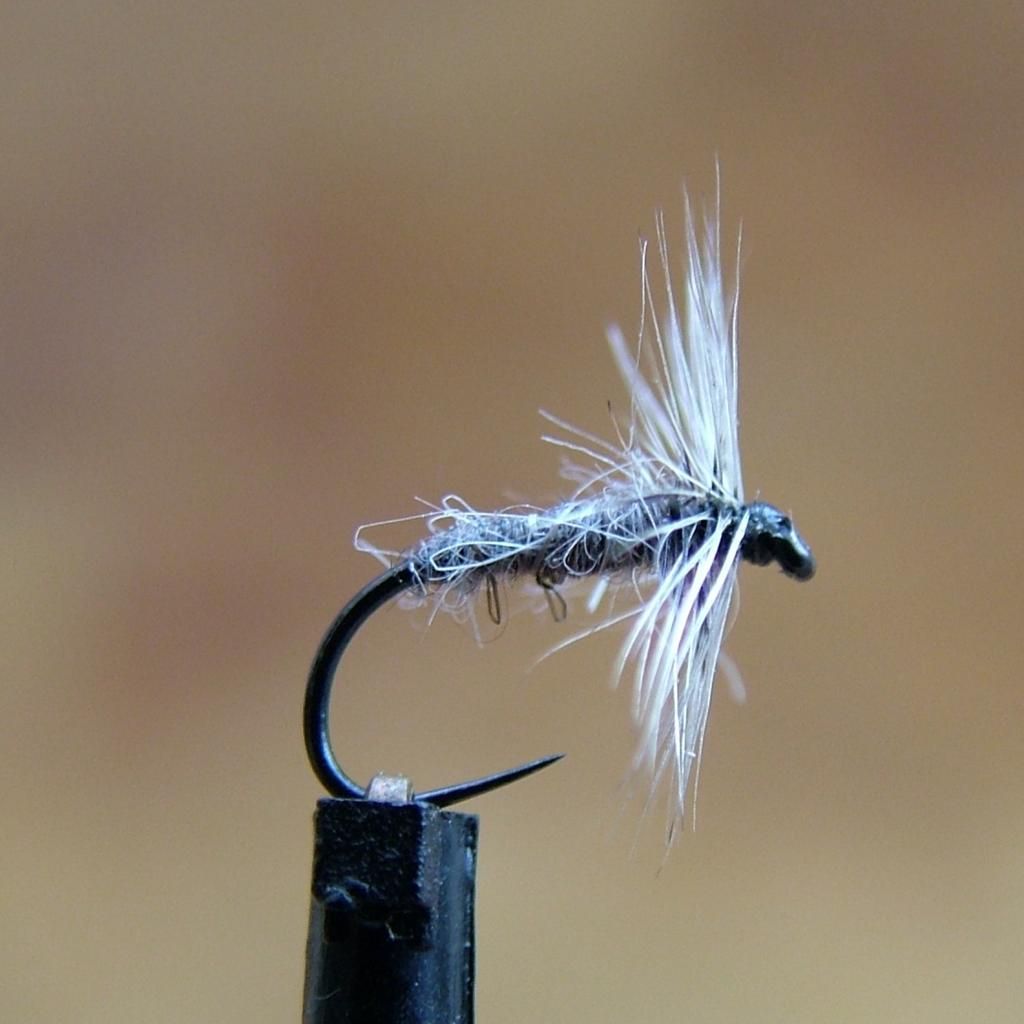
Grey Duster
Looking at last year's records, I note that nearly half my fish were taken on the nymph. This year I have only fished the nymph when I can't rise anything on the dry fly. After all, as Oliver Kite remarks often in his admirable tome Nymph Fishing in Practice (Swan Hill Press, 2006), the dry fly is by far the easier method!
The PTN (Sawyer's pattern) is just about the only nymph I use for most of my nymphing, tied in different sizes (14 to 18) and with more or less wire in the under-body to vary the weight. Kite held that tying a nymph on anything larger than a 14 (or size 1 on the old Pennell scale he knew) was bad form; that trout might take them for a lure rather than the natural. Heaven knows what he would think of strike indicators, let alone the Duo, New Zealand, or 'klink and dink' method so prevalent these days. I suspect he would regard it, rightly in my view, as fishing with a float and pooh pooh it, as I do. Besides, it's too much faff. I just sight the leader and watch for movement, or watch the targeted fish, if it can be seen. It is difficult, but extremely rewarding. Just last week, in a thrilling fifteen minute spell, I took 2 two pound browns and three one pound grayling from one small pool on the Coln using this method.
It would be fibbing to pretend I use the PTN exclusively for nymphing. I also tie a range of gold headed patterns. Now, I hear some of you saying ,"Aha - surely the addition of a gold head to a nymph turns it into a attractor pattern!". Perhaps. Use dull coloured beads if it offends you: I bought my stash of assorted gold beads years ago and have lots of 'em left, so there. A couple of examples are picture below. I usually use them when I want a small fly say, size eighteen, that will go deep quickly.
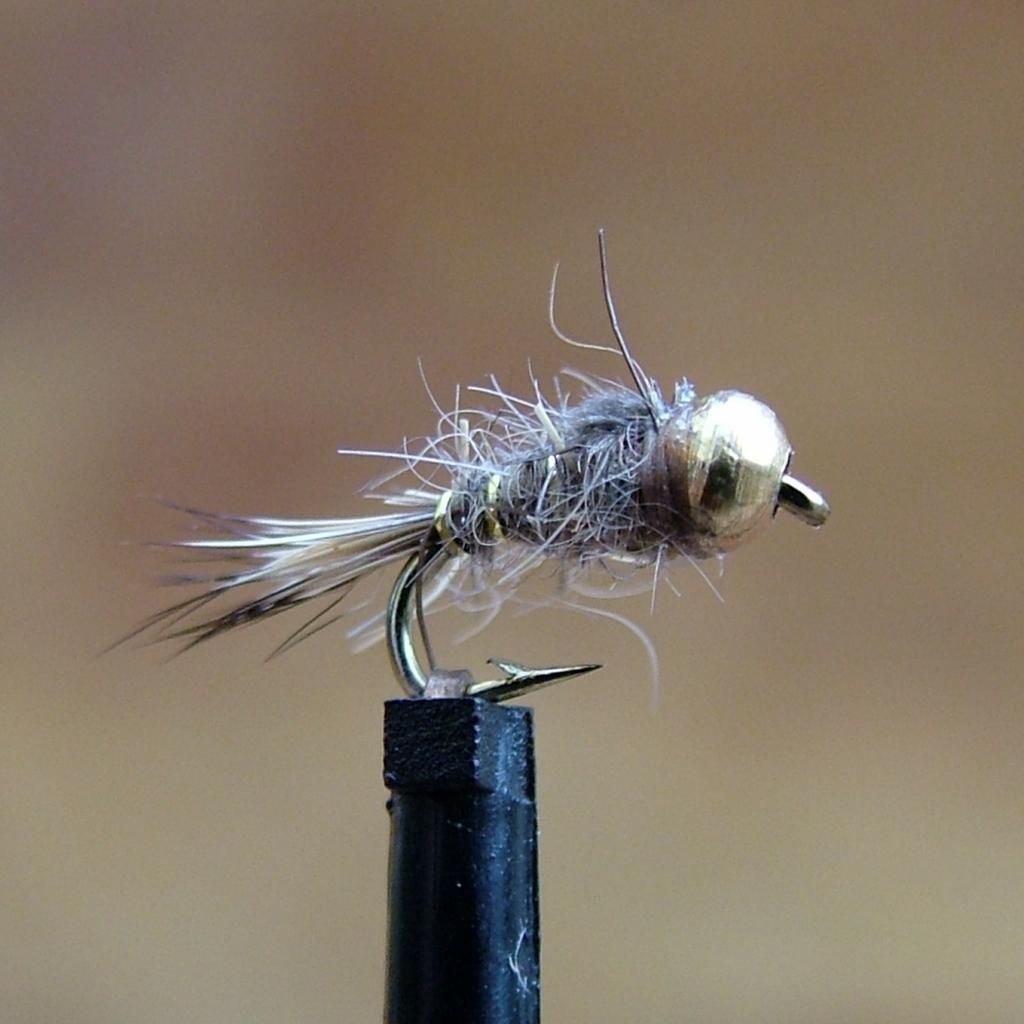
Gold Head Hare's Ear
Olive Goldhead Nymph
The bare hook nymph was another Kite speciality. He realised that badly chewed old PTNs that had been stripped of their herl by the teeth of countless trout were often as effective as new ones. In his book he tells of demonstrating their effectiveness to fellow anglers, especially when used in conjunction with the induced take method. Kite eventually tied a pattern with just a thorax, but I find that it slips down the shank if it isn't super glued, and so tie a full under body but omit the herl.
Bare Hook Nymph
Talking of attractor patterns, I concocted the actrocity pictured below one evening after, perhaps, one scotch too many. It has a heavy lead under-body and I intend to try it for the grayling of my favourite barbel river, the Teme, this coming autumn if the bearded ones fail to play ball. It bears a resemblance to the Czech Mate, but I tied this particularly garish version to use when the Teme is running high and thick, as it invariably does from Autumn onwards.
Leaded Amber Grayling Bug
And so the season draws to a close. It seems, simultaneously, like yesterday and years ago that I stood by the banks of the Churn last April. As I write a couple of weeks only remain for river trouting in my neck of the woods. The driest, most clement September on record has delayed the late season LDO bonanza, which is a shame. My rivers are still fishing like it was late summer.
The time has come to oil the fly reels, pack away the trout rods and get out the barbel gear.
Autumn has come around again
RECIPES (all barbs are flattened before fishing, or barbless patterns are used)
PHEASANT TAIL NYMPH
Hook: Partridge wet heavy supreme, sizes 14, 16, 18
Under-body: Copper Wire
Tail: Cock pheasant herl
Body: Copper wire and cock pheasant herl twisted together
Thorax: Cock pheasant herl doubled and redoubled
KITE'S IMPERIAL
Hook: Tiemco 103bl, sizes 12, 14, 16, 18 (I use mainly 14 and 16)
Thread: Pearsall's purple silk
Tail: Dun hackle fibres
Rib: Fine gold (original) or copper wire
Body: Heron primary herl (or substitute) doubled and re-doubled to form a thorax
Hackle: Various Dun shades (darker, more ginger early season; lighter, paler late season)
HAWTHORN
Hook: Kamasan B440, sizes 12, 14 (used for pictured fly, but any dry hook)
Thread: Black
Rib: Silver tinsel
Legs: Dyed black knotted pheasant tail herl
Body: Black seal fur (or substitue)
Wing: CDC
Hackle: Black cock
CDC MAYFLY EMERGER
Hook: Partridge klinkhamer, sizes 10, 12
Thread: Black
Rib: Brown floss
Body: Cream seal fur (or substitute)
Tail: Pheasant tail herl
Shuck: White Antron, doubled
Wing: CDC feathers tied upright and back-to-back
Hackle: Two badger cock hackles
BLUE WINGED OLIVE DUN
Hook: Tiemco 103bl, sizes 14, 16, 18 (pictured fly is tied on a Kamasan B170 size 18)
Thread: Olive
Body: Olive turkey biot
Tail: Dun hackle fibres
Hackle: Dun (mainly blue dun, but a few different shades for variety)
PHEASANT TAIL
Hook: Partridge patriot barbless ideal dry, sizes 14, 16, 18 (I use mainly 16 and 18)
Thread: Pearsall's hot orange
Tail: Dun hackle fibres
Rib: Fine gold or copper wire
Body: Cock pheasant tail herl doubled and re-doubled to form a thorax
Hackle: Various Dun shades
BLACK ANT
Hook: Any dry hook, sixes 16, 18, 20
Tying thread and Body: Pearsall's black silk
Hackle: Grizzle cock
KLINKHAMER
Hook: Kamasan B100, sizes 12, 14, 16, 18
Thread: Olive or tan
Body: Grey SLF
Thorax: peacock herl
Wing post: White Antron
Hackle: Red Cock
GOLD RIBBED HARE'S EAR
Hook: Any dry/emerger hook, sizes 14, 16, 18
Thread: Tan
Tail: Hare guard hairs
Rib: Fine gold wire
Body: Hare's ear hairs teased out, the scruffier the better
GREY DUSTER
Hook: Tiemco 103bl, sizes 12, 14, 16, 18, 20, 21,
Thread: Black
Body: Rabbit under-fur, or SLF
Hackle: Badger cock
GOLD HEAD HARE'S EAR
Hook: Partridge wet heavy supreme, sizes 14, 16, 18
Head: Gold bead (or any alternate colour as preferred)
Thread: Tan
Tail: Hare guard hairs
Rib: Fine gold wire
Body: Hare's ear teased out
OLIVE GOLD HEAD NYMPH
Hook: Partridge wet heavy supreme, sizes 14, 16, 18
Head: Gold bead (or any alternate colour as preferred)
Thread: Tan
Rib: Fine gold wire
Body: Olive SLF
BARE HOOK NYMPH
Hook: Partridge wet heavy supreme, sizes 14, 16, 18
Body: Fine copper wire
LEADED AMBER GRAYLING BUG
Hook: Kamasan B100, sizes 12, 14, 16
Thread: Bright orange
Under-body: Veniard's self adhesive lead sheet, cut into a strip and wound on
Rib: 3lb Maxima clear mono
Body/legs: hot orange SLF, teased out
Shellback: Veniard's clear shellback

